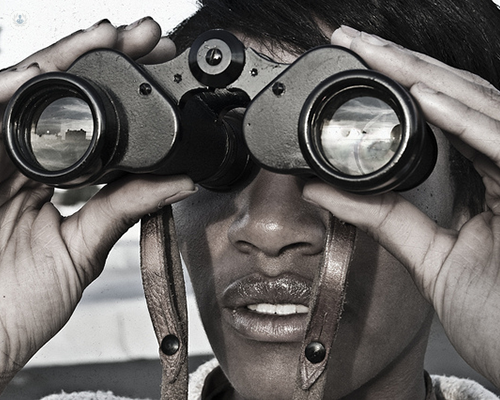Blurred horizons: a guide to myopia
Written by:If you can see nearby objects clearly, but faraway objects appear blurred, it could be you have myopia. Myopia, or nearsightedness, is a common eye condition that affects between 20% and 30% of the UK population and is becoming more prevalent as time goes by and lifestyles change. In cases of mild myopia, treatment is not always necessary, however severe myopia that can greatly affect daily life will require some form of correction. Myopia generally begins to appear in patients during puberty, but it can also occur in much younger children.

Am I shortsighted?
Common signs of myopia include:
- Distant objects appear blurred
- Necessity to squint in order to see more clearly
- Headaches caused by straining your eyes
- Difficulty driving or seeing far-off vehicles
As myopia is generally diagnosed in young children and adolescents, it is a good idea to see a doctor if your child:
- Sits close to the television
- Has to sit near the front of the class in order to see the whiteboard properly
- Lacks awareness of distant objects
- Rubs their eyes a lot
- Blinks more than usual
What causes nearsightedness?
Myopia occurs when the eye is too long or the cornea has too steep a curve. Light therefore does not focus correctly on the retina, but rather just in front of the retina resulting in blurred distant vision. The exact reason why this happens is unsure, but it is believed that genetics plays a part as nearsightedness often runs in families. Myopia has also been linked to spending too much time focussing on nearby objects such as books, smartphones, or computers as a child. Scientists believe there is a strong correlation between the increased prevalence of technology in everyday life and an increase in people with myopia.
In order to reduce the risk of becoming shortsighted, it is recommended that children spend plenty of time playing outside and not just on their phones or computer.
Myopia can also be a symptom of other eye conditions, such as keratoconus.
Do I need an eye test?
If you think you or your child has myopia, it is worth getting your eyes tested by an optician or eye specialist. For children under the age of 16, or under 19 and in full-time education, eye tests are available on the NHS for free.
If you are diagnosed as shortsighted, regular eye tests every two years are advised in order to make sure the condition is not worsening.
What’s the right treatment for me?
Treating myopia is a relatively straightforward process. The most common nearsightedness treatments are:
- Corrective lenses – either in the form of glasses or contact lenses
- Laser eye surgery – altering the shape of the eye in order to improve focus
- Artificial lens implants – an artificial lens inserted into the eye in order to permanently correct vision
To find which treatment would best suit you, get in touch with an optician or specialist, who will be able to evaluate the extent of your myopia and what kind of prescription you would need.
Is myopia always what it seems?
In some cases, it is possible for children with untreated myopia and adults with severe myopia to develop other eye conditions such as:
- A lazy eye
- A squint
- Cataracts
- Glaucoma
- Retinal detachment


